Sailing knots: a rich and ancestral know-how essential for navigation
Soak up seafaring history, and learn about our sailing knots
Being part of a family of fishermen and oyster farmers, Stéphanie grew up among sailing knots. She managed to plunge into her memories to breathe new life into those seaside emblems and transform them into modern decorative sailing knots. In this article we will not talk about deco but seamanship. The art of ropework offers a wide range of ropes that are essential for sea outings. You will learn about the different types of sailing knots and how to use them. Ready to come aboard?
The story behind sailing knots
The origin of knots seems to date back to as early as Prehistoric Times when Men used knots to catch animals thanks to snares and nets.
It is difficult to know exactly when the first sailing knot was invented. According to some remembrances, it is proven that the use of sailor's knots definitely dates back to thousands of years.
In Finland, a bowline was found on a fishing net dating from 7,200 BC but it is in Denmark that the oldest sailing knot was discovered. It was a clove hitch found on a 10,000-year-old fishing hook. It is however in Antiquity that the use of sailor's knots spread thanks to the development of sailing by Egyptian, Greek and Roman civilisations.
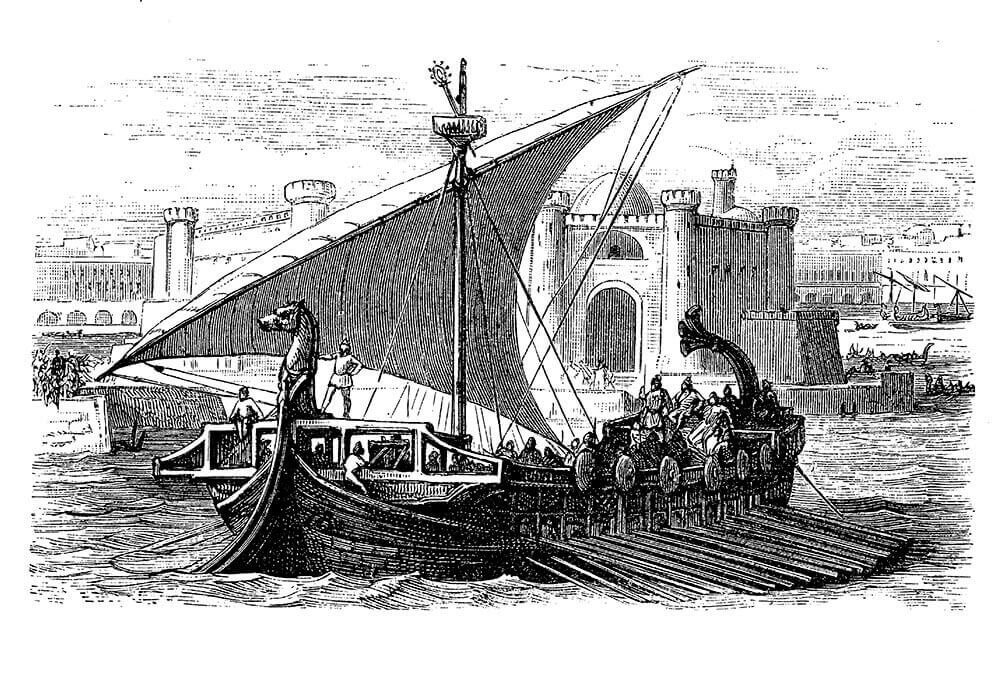
Nowadays, these essential navigation items were made popular by the navy and have become a true seaside symbol for the general public.
Mastering the art of seamanship
Whether he is an old sea dog or a cabin boy, every sailor ought to know the art of seamanship and thus the different nautical knots. To manage manoeuvres, one needs to know how to use them at the right moment before (re)setting sail.
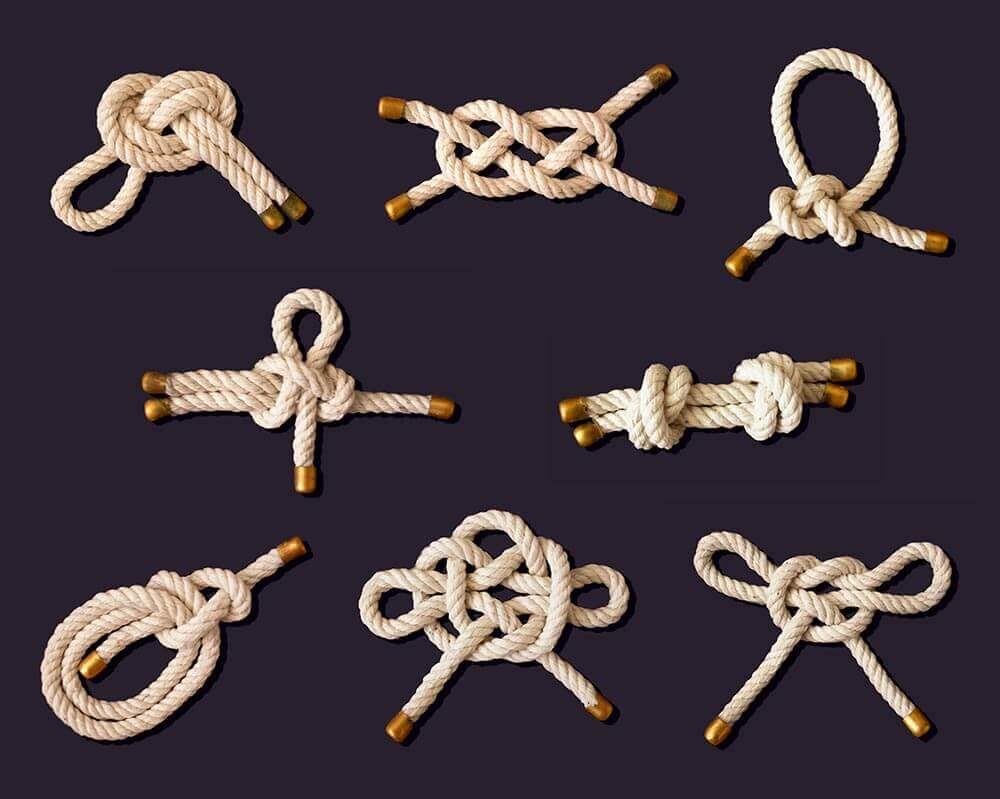
In order to have an efficient sailor's knot, essential criteria need to be taken into account. First of all, the sailing knot must be easy to tie and must be executed fast. If you do not master the art of knotting yet, train hard so you become totally comfortable with the main sailing knots, before you cast off.
To deal with the sea-spray, sun or even the pressure exerted on it, it is important that it remains resistant and does not slip. However, it needs to be easily untied as reactivity is essential in navigation.
Even if you are pretty good at knotting ropes, you must be able to use the right knot for the right manoeuvre, because an inadequate knot will quickly result in struggles at sea or at the dock.
The different types of sailor's knots and their utility
On boats, there is a specific knot for each manoeuvre. We will present you the different categories of knots and the main nautical knots to know before coming on deck.
- Stopper knots
Before leaving land for saltwater, the sailor must be capable of tying stopper knots. This type of sailing knots allows the seaman to prevent a cordage, called “line” by seafarers, from slipping into a ring or a pulley and avoid that the line frays. There are several stopper knots such as the figure eight, often used on a ship to end a cordage, as it can be tied and untied quickly.
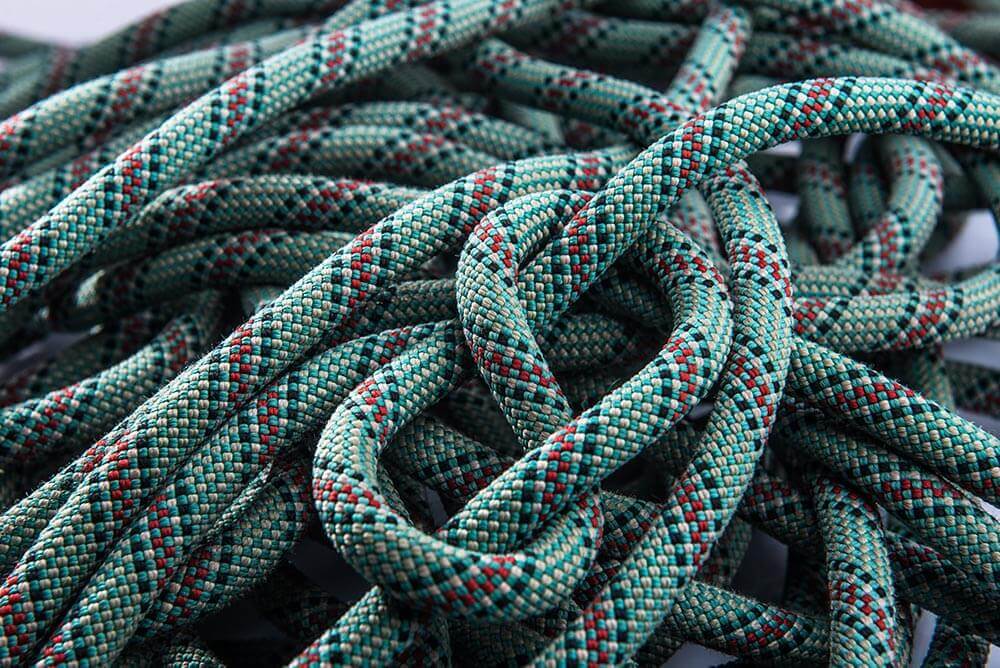
- Bend knots
Other sailor's knots to know: bend knots. These knots are used to tie two lines or cordages together to mend a broken rope or obtain a longer cordage. Some bend knots enable to join cordages of different diameters like the sheet bend whereas others are only suitable for cordages of identical size. It is actually the case of the square knot and Carrick knot, the latter being used to tow small boats. Therefore, according to the situation, one needs to choose the right bend knot to tie.
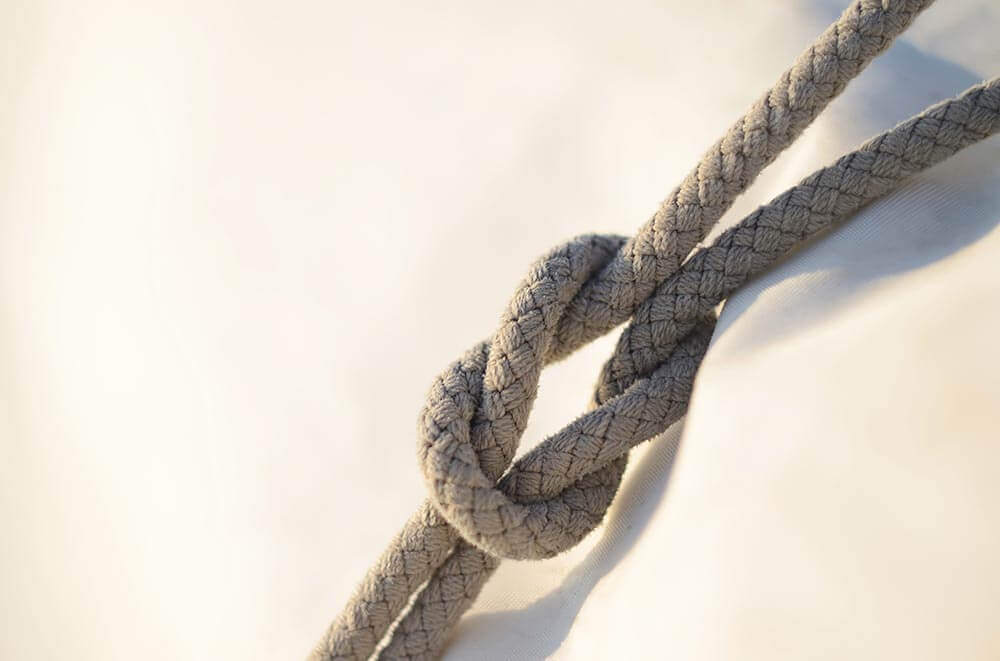
Nœud plat
- Loop knots
Those nautical knots are used on ships to attach a rope to a ring or any object by intertwining the rope on itself. The bowline is the ultimate loop knot that every sailor ought to know. It can be made in order to either attach a sheet on a sail or dock a cleat.
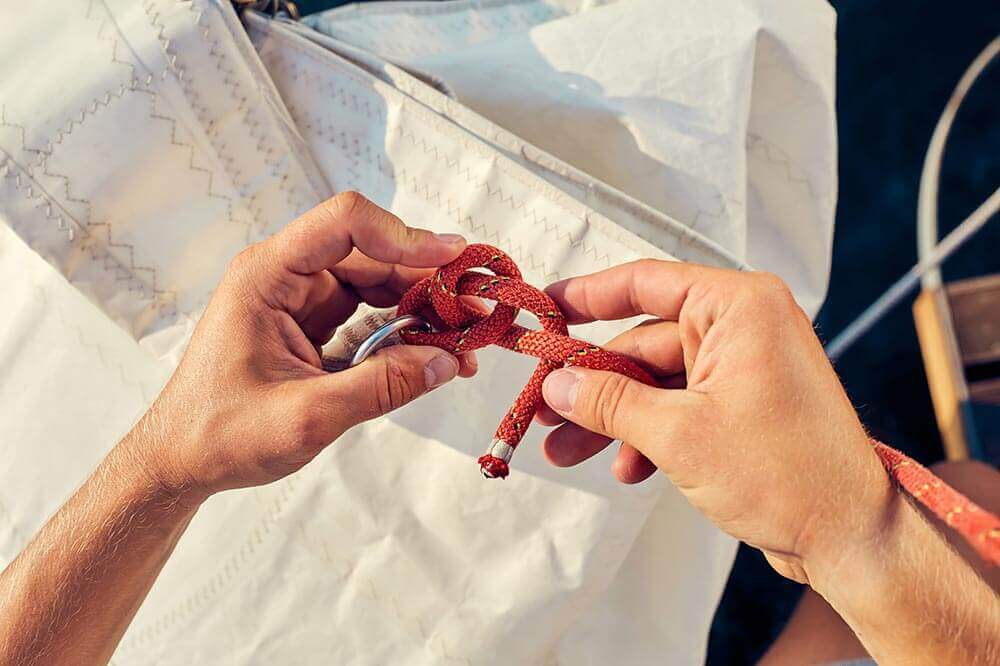
By tying a double bowline, you will be able to haul a member of your crew along the mast or hull.
- Hitch knots
It is by enlacing a rope around an object that you will obtain a hitch knot. It is often used to berth vessels, lift objects and transport them. Often used by seamen, you may use the clove hitch as a docking node, by attaching the rope to a ring or bollard, or to attach your fenders in order to protect your boat.
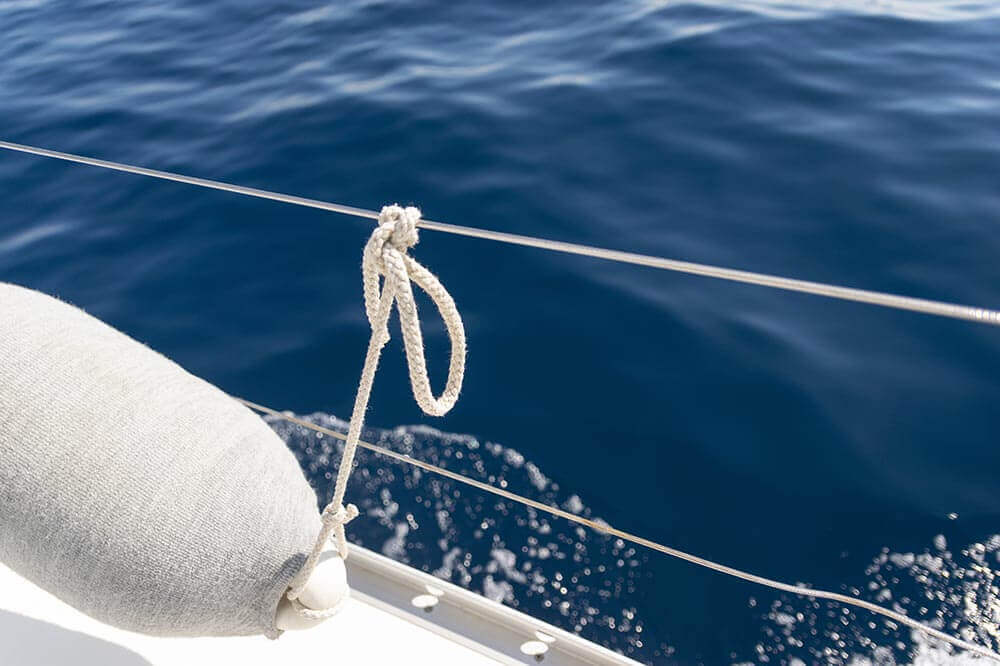
Another hitch knot to master: the cleat knot. It enables to restrain a sheet (cordage allowing sail manoeuvres) or block a halyard (cordage to hoist a sail) by attaching the rope to a cleat.
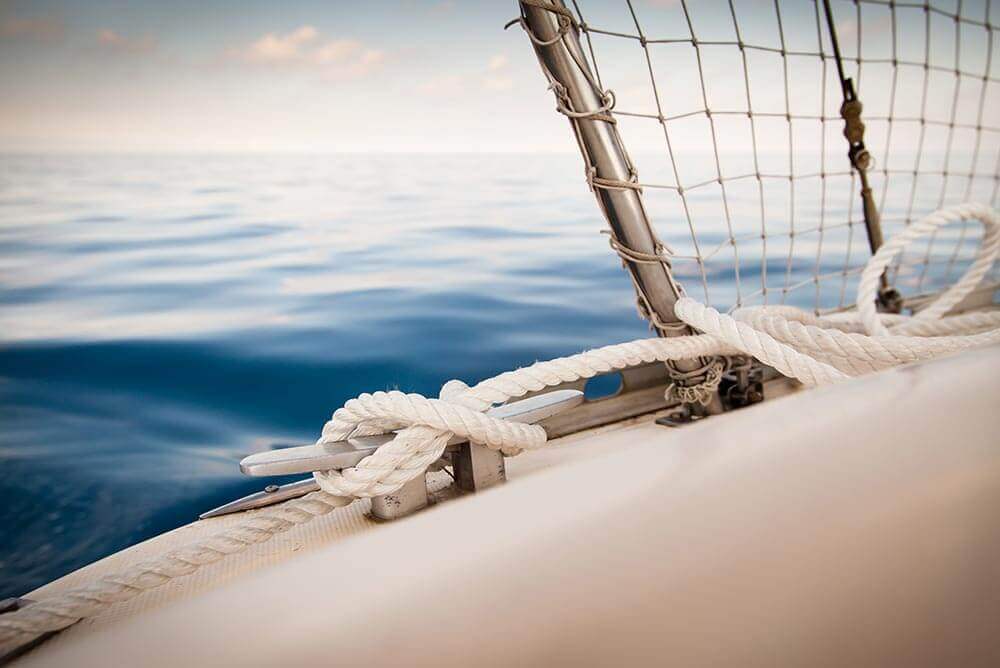
To make your boat trip more enjoyable, a sling knot will be very useful when it comes to enjoy a fresh beverage. This braided knot will allow you to attach the neck of your bottle and make it cool down in the ship’s wake. A sailor’s tip much appreciated during hot days at sea.
There are other kinds of knotting used on boats. It is the case of the chafing mat used to protect boat decks from rubbing and humidity, as well as the collision mat used to plug waterways and protect the boat from pulley shocks.
After theory, there is practice! Train yourself to tie a few ropes in order to make different types of reef knots and then you will be ready to set sail.
Even more news
-

When winter holidays go with seaside
Forget the mountain, the ocean is calling you.
-

When autumn gets inside your interior for some warm and cosy deco
Autumn colours and hygge style are combined to make you forget the rain.
-

When is the best time to go to the beach low tide or high tide?
Our tips to fully enjoy seaside holidays